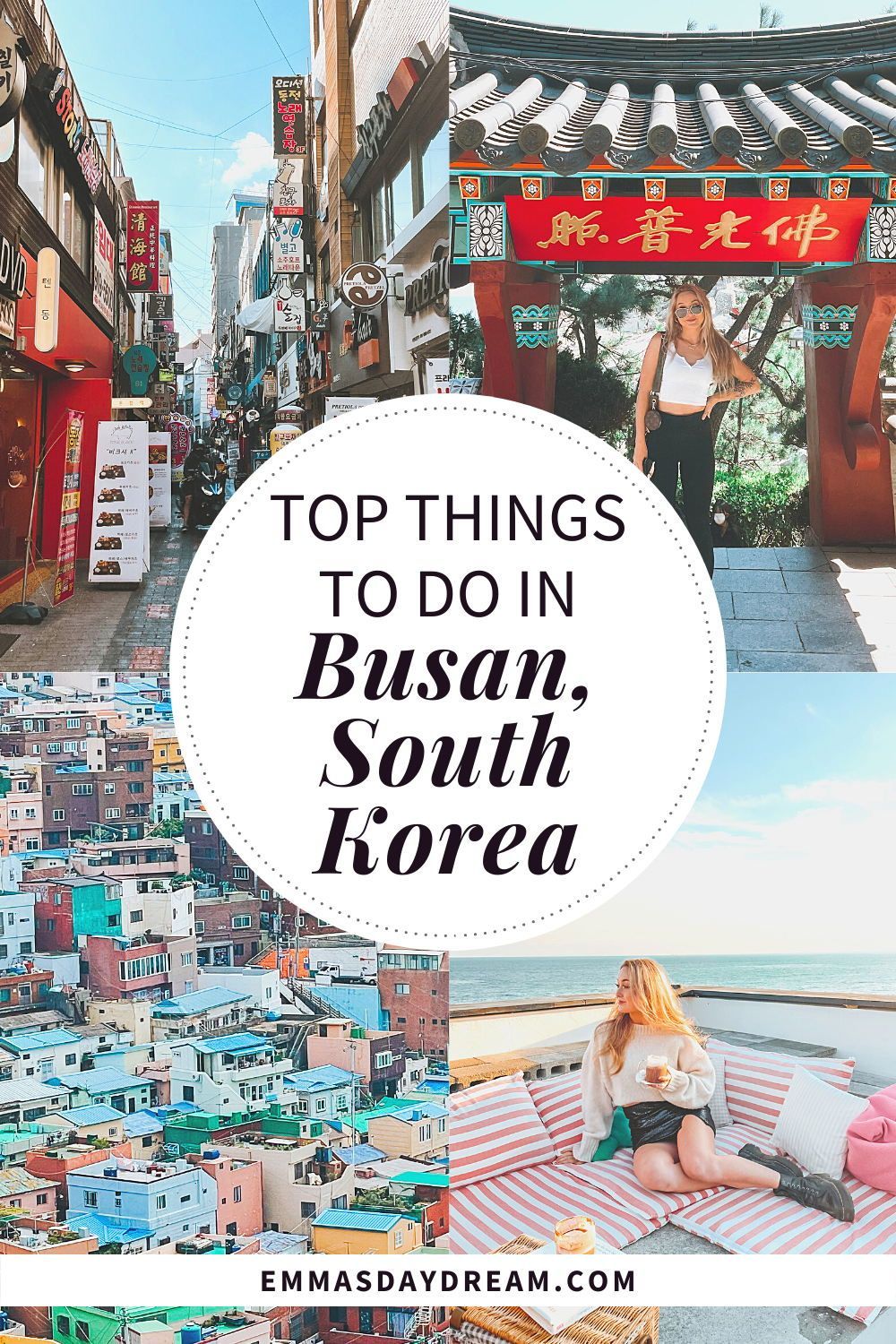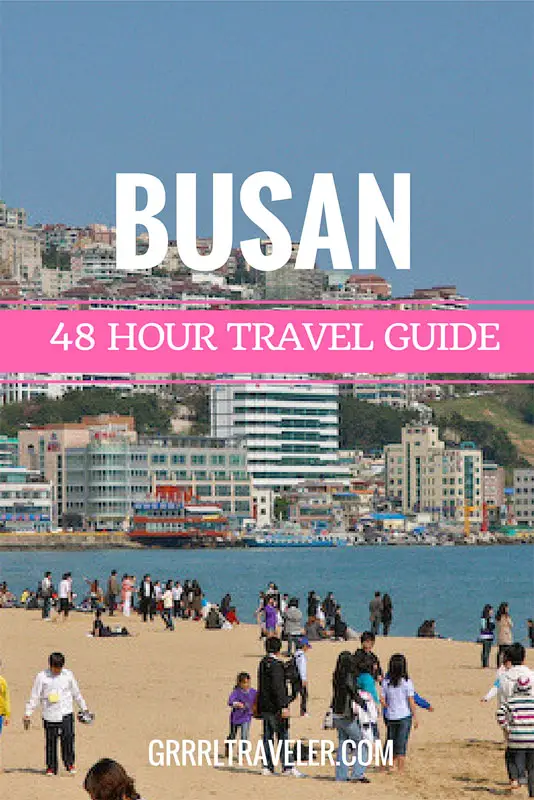
Busan, South Korea’s second-largest city, is a vibrant metropolis that effortlessly blends its rich historical tapestry with a dynamic modern spirit. Nestled on the southeastern coast, it boasts stunning beaches, towering mountains, bustling markets, and a culinary scene that will tantalize your taste buds. From its humble fishing village origins to its status as a global port city and a hub for arts and culture, Busan offers a multifaceted experience for every traveler. This comprehensive guide will equip you with everything you need to navigate and fall in love with this captivating coastal gem.
A Glimpse into Busan’s Storied Past
Busan’s history is deeply intertwined with its strategic location as a natural harbor. For centuries, it served as a vital trading post, attracting merchants and settlers from across East Asia. During the Joseon Dynasty, it was an important naval base, playing a crucial role in defending the peninsula.

Related Articles about Busan: A Coastal Gem of South Korea:
- Morocco: A Traveler’s Guide to the Kingdom of a Thousand Colors
- The Emerald Isle Beckons: Your Comprehensive Travel Guide to Sri Lanka
- Romania: A Timeless Journey Through Castles, Mountains, and Ancient Traditions
- Unveiling the Hygge: A Traveler’s Guide to Denmark
- A Traveler’s Guide to Norway: Where Fjords Whisper and Northern Lights Dance
The 20th century brought significant transformations. The Korean War (1950-1953) saw Busan become a temporary capital and a refuge for millions displaced by the conflict. This period left an indelible mark on the city, fostering resilience and a strong sense of community. Post-war, Busan rapidly industrialized, evolving into a major manufacturing and logistics center. Today, its heritage is beautifully preserved in its historic districts, vibrant markets, and the stories whispered by its ancient temples.
Top Attractions: Unveiling Busan’s Treasures
Busan’s charm lies in its diverse array of attractions, catering to a wide range of interests:
1. Haeundae Beach: The Iconic Seashore
No visit to Busan is complete without experiencing Haeundae Beach, its most famous stretch of golden sand. In the summer months, it transforms into a lively hub of activity, with sunbathers, swimmers, and beachside vendors creating a vibrant atmosphere. Beyond swimming and sunbathing, explore the Dongbaekseom Island, a picturesque peninsula at the eastern end of the beach, offering scenic walking trails, the Nurimaru APEC House (a stunning venue that hosted the 2005 Asia-Pacific Economic Cooperation summit), and breathtaking ocean views.
2. Gamcheon Culture Village: A Kaleidoscope of Colors
Often dubbed the "Machu Picchu of Busan," Gamcheon Culture Village is a whimsical and captivating hillside community. Its narrow, winding alleys are adorned with vibrant murals, intricate sculptures, and colorful houses that cascade down the mountain. Spend hours getting lost in its labyrinthine streets, discovering hidden art installations, charming cafes, and panoramic viewpoints. Don’t miss the opportunity to capture some truly Instagram-worthy photos.
3. Jagalchi Fish Market: A Sensory Overload
Immerse yourself in the authentic bustling energy of Jagalchi Fish Market, South Korea’s largest seafood market. The air is alive with the calls of vendors, the scent of fresh catches, and the vibrant colors of diverse marine life. Explore the stalls overflowing with an incredible variety of fish, shellfish, and other seafood. For a truly immersive experience, choose your fresh seafood and have it prepared on-site at one of the many restaurants within the market.

4. Beomeosa Temple: Serenity Amidst Nature
Escape the urban bustle and find tranquility at Beomeosa Temple, one of Korea’s most important Buddhist temples, nestled on the slopes of Geumjeongsan Mountain. This ancient sanctuary, founded in 678 AD, is a masterpiece of traditional Korean architecture. Wander through its serene courtyards, admire the intricate carvings, and soak in the peaceful atmosphere. The surrounding hiking trails offer further opportunities to connect with nature.
5. Taejongdae Park: Dramatic Coastal Cliffs
For dramatic coastal scenery, head to Taejongdae Park. This natural park is renowned for its towering cliffs, dense forests, and the iconic lighthouse that stands sentinel over the rugged coastline. Take a leisurely stroll along the well-maintained paths, enjoy the refreshing sea breeze, and marvel at the panoramic views of the East Sea. The park offers various transportation options, including a charming cruise ship that circles the cliffs.
6. Gukje Market: A Shopper’s Paradise
Experience the chaotic charm of Gukje Market, a sprawling traditional market that has been a cornerstone of Busan’s commerce for decades. Here, you can find everything from clothing and accessories to household goods and street food. It’s the perfect place to haggle for souvenirs, sample local snacks, and witness the vibrant pulse of daily life in Busan.
7. Busan Museum of Art: Artistic Exploration
Art enthusiasts will appreciate the Busan Museum of Art, which showcases a diverse collection of both traditional Korean art and contemporary works. The museum often hosts special exhibitions, making it a dynamic destination for cultural exploration.
8. Shinsegae Centum City: Retail Therapy on a Grand Scale
For a dose of modern luxury and retail therapy, visit Shinsegae Centum City, the world’s largest department store. Beyond its vast array of international and local brands, it boasts an ice rink, a spa, and a cinema, offering a complete entertainment experience.
Essential Travel Tips for Busan
To make your Busan adventure seamless and enjoyable, keep these tips in mind:
- Language: While many tourist areas have English signage, learning a few basic Korean phrases like "Annyeonghaseyo" (Hello) and "Gamsahamnida" (Thank you) will be greatly appreciated.
- Currency: The currency is the South Korean Won (KRW). Credit cards are widely accepted, but it’s advisable to carry some cash for smaller purchases and market stalls.
- Connectivity: Pocket Wi-Fi devices are readily available for rent at the airport, providing convenient internet access throughout your trip.
- Etiquette: Be mindful of local customs. It’s polite to remove your shoes before entering homes, temples, and some restaurants. Bowing slightly is a common greeting.
- Tipping: Tipping is not customary in South Korea.
- Power Outlets: South Korea uses Type C and F plugs with a voltage of 220V.
- Emergency Numbers: The general emergency number for police is 112, and for fire and medical services is 119.
Accommodation Options: Finding Your Perfect Stay
Busan offers a diverse range of accommodation to suit every budget and preference:
- Luxury Hotels: Areas like Haeundae and Centum City boast world-class hotels with stunning ocean views, top-notch amenities, and impeccable service. Expect brands like The Westin Chosun Busan, Park Hyatt Busan, and Lotte Hotel Busan.
- Mid-Range Hotels: You’ll find a plethora of comfortable and stylish mid-range hotels throughout the city, offering a good balance of comfort and value. Many are located near popular attractions and transportation hubs.
- Boutique Hotels: For a more unique and personalized experience, explore Busan’s charming boutique hotels, often found in trendy neighborhoods like Seomyeon and Nampo-dong.
- Guesthouses and Hostels: Budget travelers will find numerous guesthouses and hostels, offering a social atmosphere and affordable accommodation. These are excellent options for meeting other travelers.
- Hanok Stays: For a truly traditional Korean experience, consider a stay in a Hanok, a traditional Korean house, often found in more serene areas or within historic districts.
Popular Neighborhoods for Accommodation:
- Haeundae: Ideal for beach lovers and those seeking a lively atmosphere with plenty of dining and entertainment options.
- Centum City: Perfect for shoppers and those looking for modern luxury and easy access to cultural attractions.
- Nampo-dong: A vibrant area with Gukje Market and BIFF Square, offering a taste of traditional Busan life.
- Seomyeon: A bustling downtown district with a wide range of hotels, restaurants, and nightlife.
Transportation: Navigating Busan with Ease
Busan boasts an efficient and well-connected public transportation system:
- Subway: The Busan Metro is the most convenient way to get around the city. It’s clean, efficient, and covers most major attractions. Purchase a T-Money card (a rechargeable transportation card) for easy payment.
- Buses: Busan has an extensive bus network that reaches areas not covered by the subway. While they can be a bit more challenging for first-time visitors due to less English signage, they are a budget-friendly option.
- Taxis: Taxis are readily available and relatively affordable. They are a good option for shorter distances or when traveling with luggage. You can hail them on the street or find them at designated taxi stands.
- KTX (Korea Train Express): If arriving from or departing to other major cities in South Korea, the KTX is a high-speed train that connects Busan to Seoul, Daegu, and other destinations.
- Ferries: Busan is a major port city, and ferries operate to nearby islands and even to Japan.
- Walking: Many attractions, especially within specific districts like Gamcheon Culture Village or along the coast, are best explored on foot.
Tip: Download a navigation app like Naver Maps or Kakao Maps, which are more accurate for South Korea than Google Maps.
Best Time to Visit Busan: Embracing the Seasons
Busan experiences four distinct seasons, each offering a unique charm:
- Spring (March to May): This is arguably the most pleasant time to visit. The weather is mild and comfortable, with blooming cherry blossoms painting the city in vibrant colors. Expect temperatures to range from 10°C to 20°C (50°F to 68°F).
- Summer (June to August): Busan comes alive in the summer, with its beaches being the main draw. Expect warm and humid weather with temperatures ranging from 25°C to 30°C (77°F to 86°F). This is the peak tourist season, so expect larger crowds and higher prices. Be prepared for occasional rain.
- Autumn (September to November): Similar to spring, autumn offers pleasant temperatures and clear skies, making it ideal for outdoor activities and sightseeing. The foliage turns into a stunning display of reds and oranges. Temperatures are typically between 15°C and 25°C (59°F to 77°F).
- Winter (December to February): Busan experiences a milder winter compared to inland cities, with temperatures generally ranging from 0°C to 10°C (32°F to 50°F). While it can be chilly, it’s a great time to visit if you prefer fewer crowds and enjoy winter landscapes. The city is beautifully decorated for the holidays.
In conclusion, Busan is a city that captivates with its diverse offerings. Whether you’re drawn to its sun-drenched beaches, its artistic enclaves, its bustling markets, or its serene temples, Busan promises an unforgettable journey. With its rich history, vibrant culture, and welcoming spirit, this coastal gem is ready to enchant you. Pack your bags and prepare to discover the magic of Busan!





